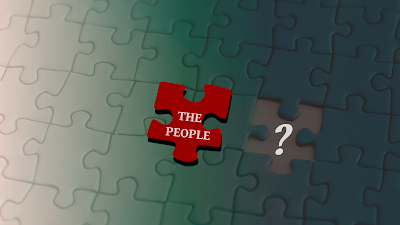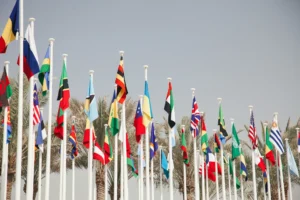In all the dashboards, donor strategies and global frameworks, something often goes missing: the people we’re trying to serve. Community voices; raw, urgent, creative are too often muted in the noise of top-down development. Yet, the answers to some of our most pressing challenges are already being lived, tested and refined by the very communities affected by them.
So why do we still treat communities as recipients, rather than as co-creators?
Development is Not a One-Size-Fits-All
For decades, development has often operated on a formula: identify a problem, propose a solution, roll it out at scale. The problem? Communities are not blueprints. What works in Nairobi’s Kibera may fail miserably in a rural village in Turkana. A water solution that works in Bangladesh may be irrelevant in drought-stricken Garissa.
Top-down development may look tidy on a PowerPoint slide, but life on the ground is anything but linear.
Communities are complex. They’re shaped by culture, politics, traditions, trauma, faith and fierce resilience. Development solutions must be just as layered and that begins by listening.
What Listening Actually Looks Like
Listening is not a checkbox in a stakeholder engagement report. It’s not a survey or a token community baraza where decisions have already been made.
Listening is deep engagement. It means sitting in people’s homes, hearing their stories, asking open-ended questions, and being willing to change course based on what you hear. It’s recognizing that someone who has lived with a problem for decades probably understands it better than a consultant with a per diem and a clipboard.
In Uganda, I once met a group of women who had devised their own system of food storage during flooding season simple, affordable and rooted in traditional knowledge. No aid agency taught them this but they were invisible to program designs that never asked: “What are you already doing that works?”
Case in Point: Community Health Workers in Kenya
Take the example of community health volunteers (CHVs) in Kenya. These are mostly women—many unpaid—who walk from house to house delivering vital health information, tracking maternal health and connecting families with local clinics. They know every pregnancy, every high-risk child and every household struggling with mental illness.
They are the frontline of public health. Yet for years, they’ve operated with minimal support and recognition.
It wasn’t until counties began engaging CHVs directly asking about their challenges, mapping out their neighborhoods, and offering stipends—that the full impact of their work came into focus. Immunization rates rose. Maternal deaths declined. But more importantly, trust in the health system grew, because the message was delivered by a neighbor, not a stranger.
The Cost of Not Listening
When development programs ignore communities, the result is often failure or worse, harm.
We’ve seen toilets built without consultation that end up unused. Youth programs that exclude local leaders. Disaster responses that bulldoze over existing coping mechanisms. The waste is staggering. The disillusionment, even greater.
Every failed intervention chips away at trust. And trust, once broken, is not easily repaired. Communities become weary of “visitors,” skeptical of promises, and fatigued by endless pilots with no sustainability.
Localization is Not a Buzzword
The global development sector loves new jargon: participatory, inclusive, human-centered, co-creation. But these words mean nothing without genuine power-sharing.
Localization is not just hiring local staff or translating documents into Swahili. It means shifting control—of budgets, of decision-making, of designto local actors.
It means funding community-based organizations directly, rather than through endless layers of subcontractors. It means trusting grassroots leaders to define success on their own terms not ours.
And yes, it means being humble enough to admit that sometimes, we’re not the experts in the room.
Listening as a Development Strategy
If listening were a strategy in itself, we’d be better off. It would mean longer project timelines, yes. Fewer flashy announcements, maybe. But the impact would be deeper, more relevant, and more likely to last.
Because when people feel heard, they feel seen. And when they feel seen, they show up—not just as participants, but as partners.
That’s the magic. Communities that are listened to become communities that lead.
So Where Do We Go From Here?
1. Ask first, act later. Before designing any program, invest time in understanding lived realities—not through assumptions or proxies, but through real, messy, in-person conversations.
2. Budget for listening. Include it in program design. Pay community members for their time and insights. Translate materials. Hire local facilitators. Don’t treat listening as a luxury.
3. Fund differently. Move more money into the hands of grassroots organizations. Let them set the agenda. Support them with tools, not templates.
4. Measure what matters. Not just outputs, but trust. Not just delivery, but dignity. Not just reach, but relevance.
5. Get uncomfortable. Listening may challenge your biases, your timeline, your metrics. Good. That’s where real change begins.
In Closing: The Power of Being Heard
If there’s one truth that unites all people—across cultures, contexts, and continents—it’s this: we all want to be heard.
So let’s stop designing development around what we think people need, and start building it around what they say they need. Let’s embrace the messiness, the nuance, the discomfort.
Because the missing piece in development isn’t more data, more funding, or more frameworks.
It’s people. It’s trust.
And it starts by listening.



